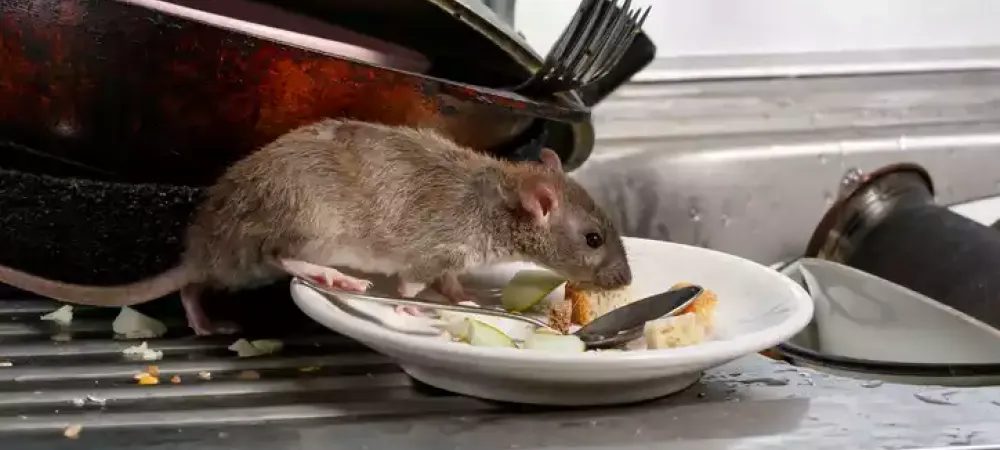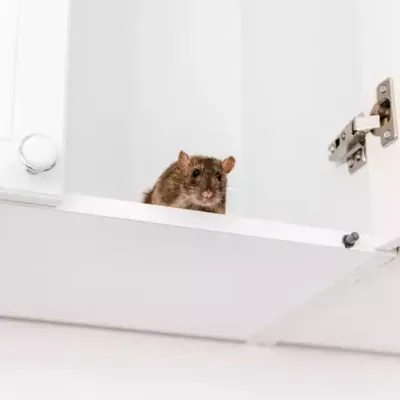Dealing with Rodent Infestations: A Guide for Pennsylvania Homeowners

Discovering a rodent infestation in your home can be a distressing experience for any homeowner. Rodents not only damage property but also pose health risks to your family. If you suspect that your home in Pennsylvania has a rodent problem, it's crucial to take immediate action. This comprehensive guide will walk you through the steps to identify and address rodent infestations effectively.
How To Identify Signs of Rodent Infestation
Before you can address the issue, you need to be certain that you're dealing with a rodent infestation. Look out for these common signs:
- Droppings: One of the most obvious signs of a rodent infestation is the presence of droppings. Rodent droppings are typically small and pellet-shaped. In Pennsylvania homes, you may find these droppings in areas where rodents frequent, such as along walls, in cabinets, near food sources, or in secluded spaces like attics and basements.
- Gnaw Marks: Rodents have a constant need to gnaw on objects to wear down their teeth. Look for gnaw marks on furniture, baseboards, electrical wires, and even food packaging. Fresh gnaw marks will appear lighter in color, while older ones may be darker and more pronounced.
- Nesting Materials: Rodents use a variety of materials to build their nests, including shredded paper, fabric, insulation, and even pieces of wood or plastic. Check hidden areas like attics, crawl spaces, and storage boxes for signs of nesting sites. If you find a nest, it's a clear indication of a rodent presence.
- Unusual Pet Behavior: If you have pets, pay attention to their behavior. Dogs and cats may exhibit heightened interest in certain areas of your home, such as corners, under furniture, or near walls. They may also become more alert or try to access spaces where rodents are active.
- Scratching Noises: Rodents are nocturnal creatures, so you may hear scratching or scurrying noises at night, especially in walls, ceilings, or under floorboards. These sounds can indicate the presence of rodents moving around and exploring your home.
- Grease Marks: As rodents navigate through tight spaces, they leave behind greasy smudges or marks along walls and baseboards. These marks, often a result of the oils in their fur, can be another clue to their presence in your home.
- Chewed Items: Rodents are notorious for chewing on a wide range of items. Check for chewed or damaged food packaging, wood, plastic, insulation, and even wires. Chewed electrical wires pose a serious fire hazard and should be addressed immediately.
- Foul Odors: In advanced infestations, you may detect a strong, musky odor in areas where rodents are active. This odor is often a combination of rodent urine, droppings, and nesting materials. If you notice a persistent unpleasant smell, investigate further for possible rodent activity. In some cases dead rodents can also cause a very strong smell.
What To Do If You Have Rodents In Your House
Discovering a potential mouse or rat infestation in your Pennsylvania home can be unsettling, so here are some steps you should take to address the issue:
Step 1: Stay Calm and Keep Children Away

Rodent infestations can be stressful, but it's important to stay calm and composed while addressing the issue. Avoid panicking or overreacting, as this can exacerbate the situation. Additionally, keep children and pets away from areas where rodent activity is suspected or confirmed. Rodents can carry diseases and may behave unpredictably when cornered, so it's best to prioritize safety and prevent unnecessary exposure.
Step 2: Assess the Extent of the Infestation
Once you've confirmed the infestation by looking for signs of mice and rats listed above, assess its extent. Determine how many rodents are present and where they are most active. Look for entry points where rodents may be entering your home, such as gaps around doors, windows, pipes, vents, and utility lines.
Step 3: Seal Entry Points
Prevent further intrusion by sealing off any entry points you might have found. Use materials like steel wool, caulk, wire mesh, hardware cloth, weatherstripping, and door sweeps to seal gaps and cracks that rodents could use to access your home:
- Start by sealing exterior entry points using steel wool or copper mesh for small openings and wire mesh and hardware cloth for larger ones.
- Use caulk or expanding foam sealant to seal cracks and gaps in walls, foundations, and siding.
- Install weatherstripping around doors and windows and door sweeps at the bottom of exterior doors.
- Address interior entry points by sealing gaps around baseboards, electrical outlets, and plumbing penetrations.
Pay attention to areas where pipes and wires enter your home, as rodents can squeeze through surprisingly small openings.
Step 4: Remove Food Sources
Rodents are attracted to food sources, so eliminate their access to food:
- Store food in airtight containers: Transfer dry goods such as grains, cereals, and pet food from their original packaging to sealed containers made of glass, metal, or heavy-duty plastic. This prevents rodents from accessing and contaminating these food sources.
- Keep countertops and surfaces clean: Wipe down countertops, tables, and other food preparation areas regularly to remove crumbs, spills, and food residues. Pay attention to areas behind appliances and under furniture where food particles can accumulate.
- Store trash securely: Use trash cans with tight-fitting lids to prevent rodents from scavenging for food in the garbage. Double-bag food waste and dispose of trash regularly to reduce odors that attract rodents.
- Seal food waste in compost bins: If you compost food scraps, use a sealed compost bin or tumbler to prevent rodents from accessing organic waste. Avoid composting meat, dairy, and oily foods that can attract pests.
- Clean up outdoor areas: Remove fallen fruits, nuts, and birdseed from outdoor areas around your home. Keep bird feeders clean and use squirrel-proof feeders to minimize spillage and prevent rodents from feeding on seeds.
- Eliminate water sources: Rodents need water as well as food, so fix leaky faucets, pipes, and appliances to reduce moisture and eliminate potential water sources that attract rodents.
- Store firewood away from the house: Keep firewood stacked neatly and away from the exterior walls of your home. Elevate the woodpile off the ground and inspect it regularly for signs of rodent activity.
- Limit pet food access: Feed pets indoors and avoid leaving food bowls outside overnight. If you must feed pets outdoors, remove uneaten food promptly and store pet food in sealed containers.
Learn more about what can attract rodents to your home.
Step 5: Sanitize the Infested Areas
Thoroughly clean and sanitize areas where rodents have been active. Wear gloves and a mask to protect yourself from potential contaminants. Remove rodent droppings, urine stains, and nesting materials using disinfectants. Repair any damage caused by rodents, such as chewed wires or insulation.
Step 6: Consider Using Traps
Depending on the severity of the infestation, you may choose to use traps to capture and remove rodents. Place traps in areas where rodents are known to frequent, such as along walls or near their nests.
- Snap Traps: Snap traps are traditional, spring-loaded devices designed to snap shut when triggered by a rodent. They are effective for catching mice and rats and are available in various sizes to accommodate different rodent species. Snap traps are typically baited with food to attract rodents.
- Glue Traps: Glue traps consist of a sticky adhesive surface that captures rodents when they walk over it. Once stuck, rodents are unable to escape. Glue traps are easy to set up and can be used indoors or outdoors. However, they are not always humane and may cause distress to trapped rodents.
- Live Traps: Live traps are non-lethal devices designed to catch rodents alive for relocation or release. They typically consist of a cage or box with a triggering mechanism that closes the door when a rodent enters. Live traps are considered more humane but require regular monitoring to release captured rodents safely.
- Electronic Traps: Electronic traps use electronic sensors and a high-voltage shock to quickly and humanely kill rodents upon entry. These traps are efficient and can be reused multiple times. They are suitable for both mice and rats and often include indicators to signal when a rodent has been caught.
- Multiple-Catch Traps: Multiple-catch traps are designed to capture multiple rodents without needing to reset the trap each time. These traps typically have multiple entry points and a mechanism that closes the door once rodents enter. Multiple-catch traps are useful for controlling larger infestations.
- Bucket Traps: Bucket traps are DIY traps that use a bucket or container filled with water as a drowning mechanism. A ramp or bridge leads rodents to the edge of the bucket, where they fall in and are unable to escape. Bucket traps are effective for outdoor use but require regular maintenance.
- Ultrasonic Repellents: While not traps in the traditional sense, ultrasonic repellents emit high-frequency sounds that are unpleasant to rodents, deterring them from entering an area. Ultrasonic repellents are often used as a preventive measure but may have limited effectiveness in controlling established infestations.
Step 8: Call Rodent Exterminators
Whether you found only one rodent or are dealing with a severe infestation, the most effective way to get rid of rats and mice for good is by seeking professional pest control services. Pest control professionals have the expertise, tools, and resources to effectively eliminate rodent infestations and prevent future occurrences. They can also provide valuable advice on long-term rodent prevention strategies.
If you live in PA and are looking for comprehensive rodent control backed by over 85 years of local experience, look no further than D-Bug Pest Control. Contact us today to schedule your rodent inspection!

